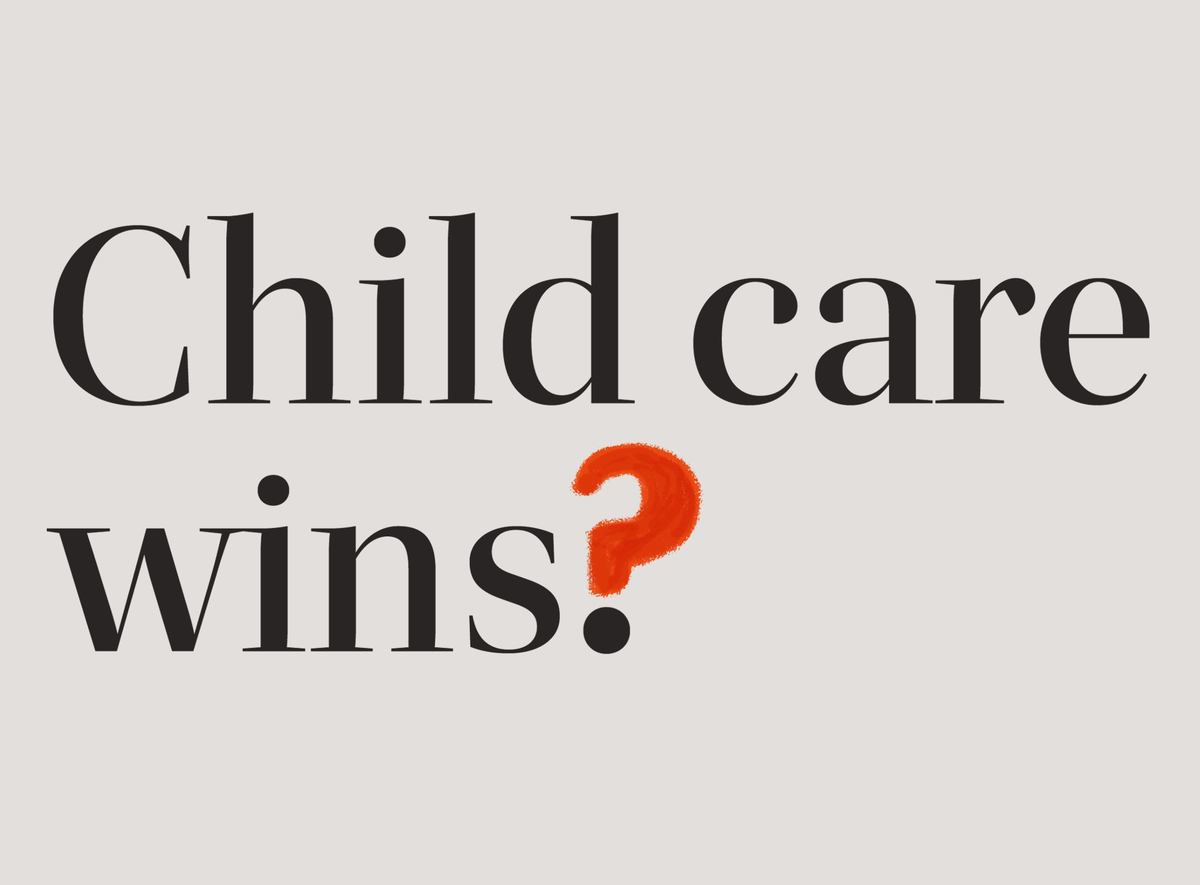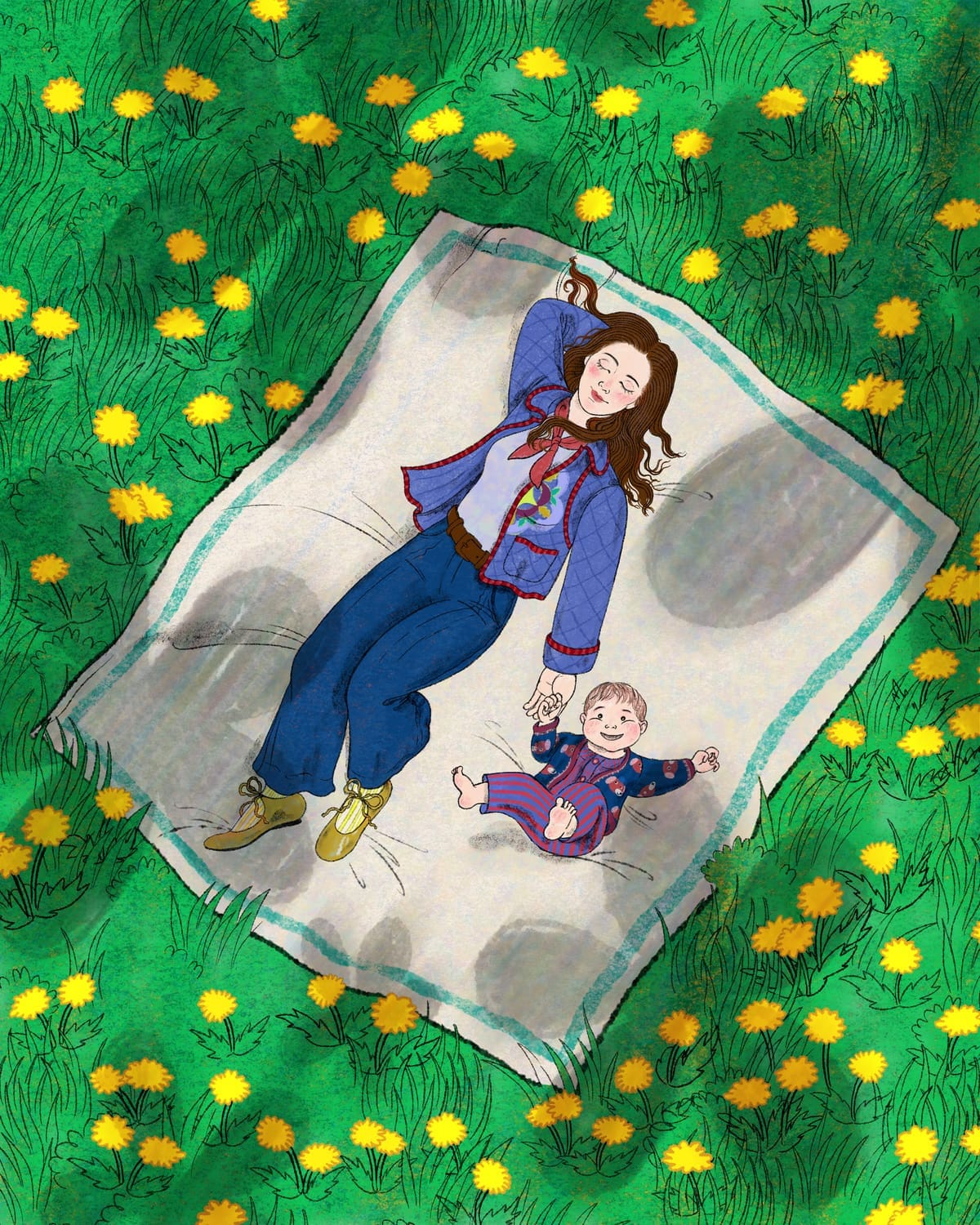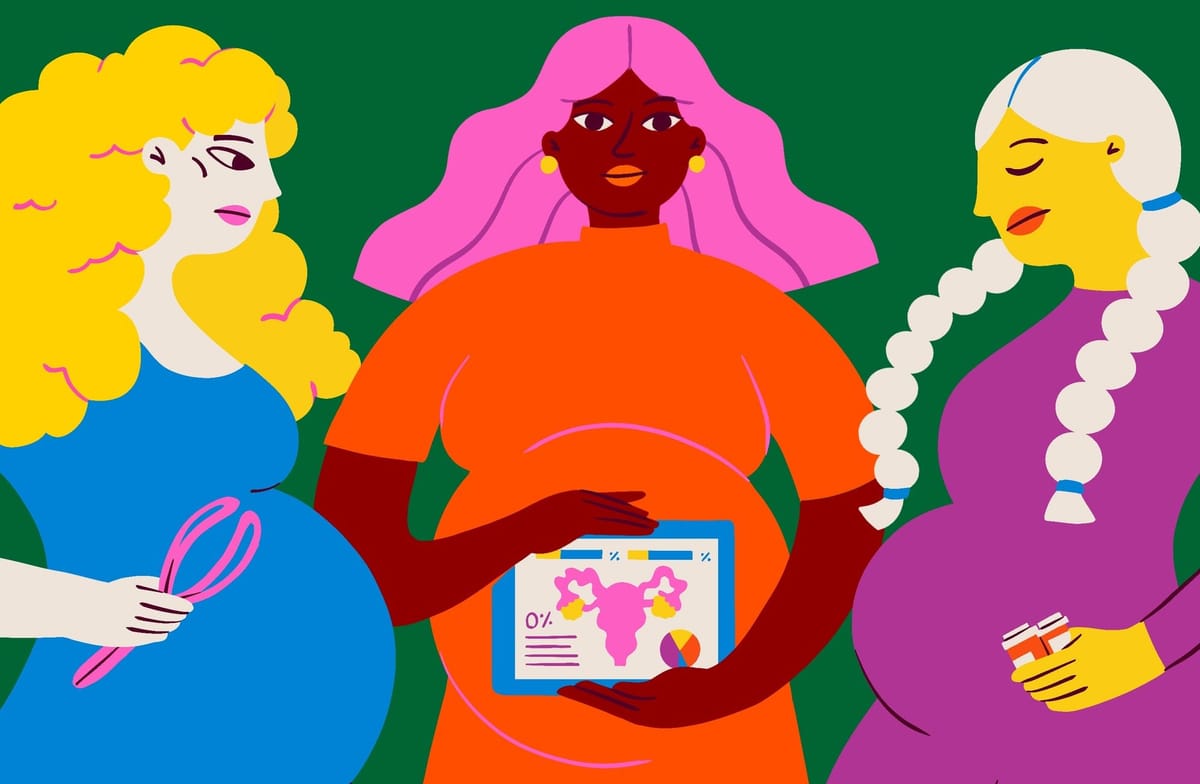I Wish Trump's One Big Beautiful Bill Was the Solution to America’s Child Care Crisis. It’s Not.
Beware the 'momwashing' provisions.

On July 4, 2025, while many Americans were busy grilling hot dogs, Donald J. Trump was busy signing the One Big Beautiful Bill Act into law. Passing the bill on Independence Day seemed to flick at—was it just me?—a political play towards patriotism. Depending on your perspective (and your income), it was either music to your ears or made you roll your eyes to the roof.
In any case, you no doubt read the brushstrokes: Tax relief for the wealthy, a boon for corporate entities, a boost to border spending. But also: Cuts to Medicaid to the tune of $1 trillion, alongside slashed food benefits and slashed clean energy initiatives.
Slipped into the midst of all this were a few seemingly “good” provisions for child care which some quickly touted as wins.
Those who didn’t have time to read all the fine print—say, moms who are currently swamped under the insanity of summertime child care—might have skimmed the headlines and assumed we’re headed in a positive direction.
But sorry, no. This bill is not much of a “child care win” at all.

‘It’s momwashing’
Child care experts have long called for policies that stabilize the child care industry and increase accessibility, affordability, and quality and have pushed to treat child care as an essential need for all American families. This is not that. Each of the “wins” gushed about are baked into the bill in the form of expanded tax provisions.
“The math doesn’t math. It’s momwashing,” is how Lauren Smith Brody explained it to me. Brody is the founder of The Fifth Trimester, a gender equality firm, and a co-founder of the nonpartisan nonprofit Chamber of Mothers. While she appreciates incremental change and bipartisan efforts, she also knows the direct effect on American mothers may not be as rosy as presented. How, for example, should one square the fact that this seemingly positive list of “child care wins” is bundled in the same bill that leaves millions of families without health insurance?
Tax breaks will not stabilize the collapsing child care sector. Tax breaks will not serve all American families. So what exactly did America’s parents win?
Let's take a look.
The provisions, up close
The Child and Dependent Care Tax Credit. This expanded tax credit ups the percentage that working parents can get back on child care expenses. Good on its face, sure, but it's a superficial bone to throw. Parents have always been able to claim a certain percentage of child care expenses up to a certain amount. Now they can claim a slightly higher percentage of child care expenses up to a certain amount. That certain amount is $3,000 for one child and $6,000 for two or more. The percentage that could be claimed prior to the OBBB expansion ranged from 34% for families right on the poverty line ($30,000-$34,000 household income) to 20% for families bringing in over $206,000 per year. With the new bill, parents in the former bracket (right on the poverty line) can claim up to 49% of that allowed amount, with families making more than $34,000, but still below $206,000, getting a little boost on a sliding scale based on income bracket.
But let’s be clear, here: These are tax credits. Tax credits still require parents to pay up front for child care and then wait to recoup that break when they file their tax return. Not a single state can claim an average cost of accredited child care anywhere near the price tag of $3,000 per child annually so there’s a good chance most families are still paying beyond what they could claim. What’s more, both parents need to be working (or actively looking for work) in order to get the benefit.
Best case scenario: A family with a combined working income of $34,000, paying $6,000 for their two kids for the entire year (10% of their income) and filing everything perfectly when tax season rolls around, could now expect to get back $2,940 instead of $2040. $900 more. It is simply not realistic, in practice, and will barely dent the growing financial pressure on families that need the break the most.
The Employer-Provided Child Care Assistance Plan. This tax provision “supports businesses who want to help locate or provide child care for their employees” by allowing employers to claim a certain percentage spent on “qualified child care expenditures.” The previous break was 25% of cost, up to $150,000. Now the tax break has expanded to 50% of cost for large businesses and 60% of the cost to small businesses with expenses up to $600,000. It includes the costs of opening an all-new child care facility (building/acquiring/rehabilitating), or covering the operating costs and/or contracting costs for an already up-and-running child care facility giving preference to employees. This tax break has never been an enticing sell to companies. Whether this extra incentive will motivate employers to step up remains to be seen.
This doesn’t really translate to parents having lower child care costs, though it could in theory. (Emphasis on theory.) And sure, this tax break may incentivize employers to step up and provide accessible child care as an employee benefit (again, in theory) but, even in its simplest, most magnanimous version, this incentive ties both child care prices and the child care facility to an employment agreement. Lose your job and poof, it's gone.
Dependent Care Assistance Plans. This one's a doozy. Simply put, this tax provision increases the amount families can set aside in their flexible spending accounts. Originally that number was capped at $5,000; now it’s $7,500. A family can bank up to $7,500, pre-tax in their FSA/DCAP account and put it towards covering child care expenses throughout the year—assuming they have that kind of cash on hand to set aside in the first place. But the reality is this: A majority of American parents live paycheck to paycheck. In addition, these accounts are use-it-or-lose-it. If you change jobs, quit, or get let go, every dollar in that account will disappear within a couple of months. Even if all families had equal access to an FSA/DCAP plan (which they don’t), this still raises a very reasonable question: How many families would or could actually take advantage of this? I’ll give you a hint: not the ones who need it the most.
Finally, there is the expansion of the child care tax credit, which jumped by $200 from $2,000 to $2,200. Is it progress? Yes, it’s progress. But by my math, it’s also not enough to cover the cost of a single mid-level car seat, and possibly not even that, thanks to tariffs. It surely couldn’t make a dent in bridging the broader rising costs of child care.

‘Don’t be fooled’
Look, I’m not one to look a gift horse in the mouth. Any conversation around child care on Capitol Hill is better than no conversation at all. But to those who trumpet the expansion of these tax breaks as “child care wins,” I say: Don’t be fooled.
The problem is not that the expansion of these tax breaks are entirely useless; indeed, some parents will hopefully benefit. The problem is the perception that these tax cuts amount to “billions in child care wins.” The problem lies in the illusion that something significant was done for child care; allowing us to—under the notion of showing that America cares about America’s moms (who inevitably bear the brunt of a child care crisis)—wipe our hands, and move on. The reality is they, we, all of us, are so far from done.
As child care rates rise, providers leave the field, and child care programs shutter, it won’t matter if a family is paying 10% of their income instead of 12% of their income. It won’t matter if one’s employer gets a tax break to offer a referral service that can only source unaffordable options. It won’t matter because at the end of the day, the child care industry is in crisis; quality and choice are suffering and tax breaks alone can’t save or solve it.
This is not a win; this is momwashing. I said it before and I’ll say it again: Don’t. Be. Fooled.







